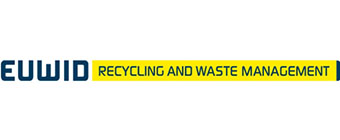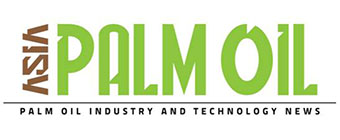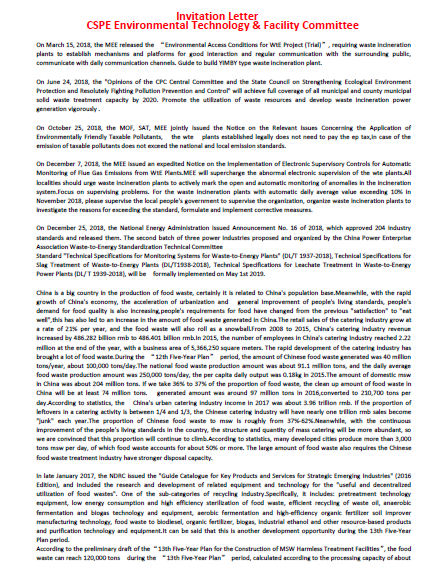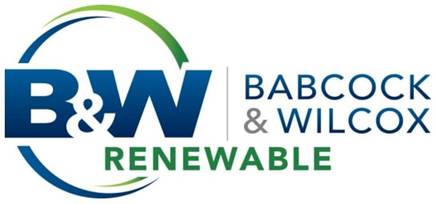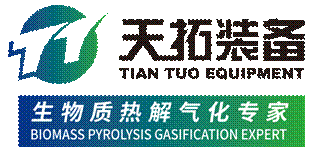400+Global High Level Attendees
50+Renowned High Level Speakers
40+Selected Exhibitors Onsite
30+Local Municipalities
100+Biomass & WtE Investors and Operators
30+EPCs
15+RDF Producers,Cement Plants
80+Palm oil,Pulp and paper,Sugar mill
30+Biomass pellet producers
Broaders solid waste series event was originated from the urban waste incineration power generation technology application seminar held in Shenzhen in 2004. It was held in Tianjin and Shanghai in 2005 and 2006 respectively. It was upgraded to the Asia Waste to Energy Congress in 2012 and moved to ASEAN in 2023 as the ASEAN Waste to Energy Week in Bangkok, Thailand,ASEAN Waste-to-Energy Week 2024 in Saigon Vietnam,Arab League Solid Waste Management Summit 2024 in Cairo Egypt,Asean Biomass Utilization Congress 2024 in BKK Thailand,Asean Solid Waste Management Congress 2024 in BKK Thailand. The conference attracted more than 5,000 delegates from more than 80 countries and regions including China, United States, France, Sweden, Austria, Finland, Norway, Iceland, Denmark, Poland, Czech Republic, Germany, Austria, Switzerland, Russia, Ukraine, United Kingdom, Ireland, Netherlands, Belgium, Italy, Spain, Portugal, Thailand, Japan, Singapore, South Korea, Malaysia, Australia, India, Indonesia, Philippines, Vietnam, United Arab Emirates,The Kingdom of Saudi Arabia,The Kingdom of Bahrain,Egypt,South Africa,The Kingdom of Morocco, Iran,The Islamic Republic of Pakistan,Bangladesh,Lebanon, Canada, Sri Lanka, South Africa, Hong Kong, Taiwan, Macau etc attended the conference. Previous participants have visited Beijing Lujiashan Shougang Biomass Waste Incineration Power Plant in 2014, Suzhou Everbright Waste Incineration Power Plant in 2015, Shanghai Environment Laogang Waste Incineration Power Plant in 2016, Shenzhen Energy Yantian Waste Incineration Power Plant in 2019, Guangzhou Third Resource Thermal Power Plant in 2021,Shenzhen Energy Longgang Energy Ecological Park in 2021,Bangkok BMA C&G Waste-to-Energy Power Plant in 2023,Everbright International's Can Tho Waste-to-energy Project in Vietnam in 2024.Thailand Chonburi Clean Energy Power Plant in 2024.
Asia Waste to Energy Congress 2012 was held successfully in Pullman Shanghai Skyway Hotel from 15th-16th Nov 2012
2nd Annual Asia Waste to Energy Congress 2013 was held successfully in Pullman Shanghai Skyway Hotel from 24th-25th Sep 2013
3rd Annual Asia Waste to Energy Congress 2014 was held successfully in Renaissance Beijing Capital Hotel from 22nd-23rd Oct 2014
4th Annual Asia Waste to Energy Congress 2015 was held successfully in Pullman Shanghai Skyway Hotel from 24th-25th Sep 2015
5th Annual Asia Waste to Energy Congress 2016 was held successfully in Pullman Shanghai Skyway Hotel from 28th-29th Sep 2016
6th Annual Asia Waste to Energy Congress 2017 was held successfully in Pullman Shanghai Skyway Hotel from 30th Nov-1st Dec 2017
7th Annual Asia Waste to Energy Congress 2019 was held successfully in Saint Regis Shen Zhen Hotel from 28th Jun-29th Jun 2019
8th Annual Asia Waste to Energy Week 2021 was held successfully in Four Points Sheraton Guang Zhou Hotel from 27th-28th Sep 2021
Inaugural Asia Hazardous Waste Treatment Congress 2016 was held successfully in Pullman Shanghai Skyway Hotel on 27th Sep 2016
2nd Asia Hazardous Waste Treatment Congress 2017 was held successfully in Pullman Shanghai Skyway Hotel on 28th-29th Nov 2017
3rd Asia Hazardous Waste Treatment Congress 2018 was held successfully in InterContinental Nanjing Hotel on 26th-27th Sep 2018
4th Annual Asia Hazardous Waste Treatment Congress 2019 was held successfully in The Sofitel Nanjing Galaxy Hotel on 7th-8th Nov 2019
5th Annual Asia Hazardous Waste Treatment Congress 2020 was held successfully in Hilton Jinan South Hotel on 24th-25th Sep 2020
Asia Food Waste Treatment Congress 2019 was held successfully in Saint Regis Shen Zhen Hotel on 26th June 2019
ASEAN Food Waste Treatment Congress 2023 was held successfully in Hilton Sukhumvit Bangkok Hotel on 16th Oct 2023
Asean Waste to Energy Week 2023 was held successfully in Hilton Sukhumvit Bangkok Hotel on 18th-20th Oct 2023
Asean Waste to Energy Week 2024 was held successfully in Pullman Saigon Centre Hotel on 14th-16th Mar 2024
Arab League Solid Waste Management Summit 2024 was held successfully in Fairmont Nile City Cairo Hotel on 27th Jun 2024
Asean Biomass Utilization Congress 2024&Asean Solid Waste Management Congress 2024 was held successfully in Eastin Grand Hotel Sathorn Bangkok 27th-28th Nov,2024
The Broaders 24th Edition Solid Waste Series
Event Will be Scheduled on 28th-29th Apr 2025 in Malaysia 2025
Asean Biomass Utilization Congress 2025 Event Background
PALM oil waste in Malaysia represents a significant environmental and management challenge, as the country is one of the world's largest producers of palm oil. The industry generates substantial amounts of waste í¬ including empty fruit bunches (EFBs), palm oil mill effluent (POME) and palm kernel shells (PKS). There are ongoing efforts to manage these wastes more effectively and sustainably.For instance, converting waste into bioenergy or incorporating it into building materials not only helps reduce the environmental impact but also adds economic value to the palm oil industry.
The Malaysian Palm Oil Board (MPOB) told TMR that its collaboration with the Ministry of Plantation and Commodities (KPK) and industry stakeholders, has developed the National Agricommodity Policy (DAKN 2030) which aims to address various aspects of managing palm oil waste, with a specific focus on reducing its environmental impact. Key strategies outlined in the policy include the utilisation of biomass and biofuels derived from the palm oil sector. Moreover, several other pertinent regulations are in place to govern the management of palm oil waste.
MPOB is actively promoting new technologies and practices aimed at bolstering the sustainability of waste management in the palm oil industry including: Biogas capture and utilisation and methane avoidance,Biomass to energy conversion,Hydrotreated Vegetable Oil (HVO), Biomass into value-added products,Technology for wastewater treatment Nevertheless, MPOB actively engages in collaborations with both local and international organisations to elevate waste management practices within the oil palm industry. These partnerships are geared towards promoting sustainable waste management, generating income and cultivating a circular economy within the industry. One notable outcome of the collaborations is the dissemination of waste management technologies to stakeholders in the oil palm sector.
MPOB is strategically focused on advancing waste management techniques in the palm oil industry through the development of biomass and bioenergy sectors. Recognising the abundant biomass resources available and the imperative to diversify energy sources amid petroleum scarcity, Ahmad Parveez said MPOBí»s future plans for enhancing waste management techniques in the palm oil industry focus on the development of the biomass and bio-energy sectors. It includes next-generation biofuels and hydrocracked fuels, facilitated by the adoption of disruptive and upgrading technologies for biomass-to-energy conversion within palm oil mill complexes. By harnessing solid, liquid and gaseous fuels as part of a biorefinery value chain, MPOB aims to maximise resource utilisation and minimise waste generation. Furthermore, MPOB intends to champion the biorefinery concept in the oil palm industry, leveraging various biomass components such as EFBs, PKS and mesocarp fibres to produce value-added products, biofuels and biochemicals. Integrating biorefinery processes with existing palm oil mills holds the potential to enhance resource efficiency, foster sustainability and promote circular economy principles within the industry.
Malaysia took a significant step forward in its commitment to sustainable energy with a focus on palm-based biomass, following the National Biomass Action Plan 2023-2030. The Biomass Roundtable 2024, held at MIDA Sentral, brought together key stakeholders to foster high-value investments and support Malaysia's goal of net-zero carbon emissions by 2050.Deputy Minister of Investment, Trade and Industry (MITI), YB Liew Chin Tong, emphasised the transformative potential of biomass, encouraging its use as a crucial feedstock for advanced fuels and green industries. This aligns with the New Industrial Master Plan (NIMP) 2030, which aims to foster economic growth through innovative technologies.Malaysia took a significant step forward in its commitment to sustainable energy with a focus on palm-based biomass, following the National Biomass Action Plan 2023-2030. The Biomass Roundtable 2024, held at MIDA Sentral, brought together key stakeholders to foster high-value investments and support Malaysia's goal of net-zero carbon emissions by 2050.Deputy Minister of Investment, Trade and Industry (MITI), YB Liew Chin Tong, emphasised the transformative potential of biomass, encouraging its use as a crucial feedstock for advanced fuels and green industries. This aligns with the New Industrial Master Plan (NIMP) 2030, which aims to foster economic growth through innovative technologies.
Malaysia's Ministry of Plantation and Commodities on October 22 proposed investing in new technologies and infrastructure to more efficiently convert waste from palm oil production into biomass energy.
Minister of Plantation and Commodities Johari Abdul Ghani said that waste industry materials like empty fruit bunches (EFB), mesocarp fibre, and palm kernel shells could be burned and turned into energy.
The minister emphasised that palm oil mills generate effluent that could be converted into energy through methane capture. Integrating these organic materials into the agricultural cycle creates a closed-loop system.
Malaysia,the world's second largest producer of palm oil, just after Indonesia,has pledged to achieve net-zero by 2050. It has committed to retire coal-fired power plants by 2044 as part of its energy transition and climate change policy.Malaysia is home to 446 palm oil mills, which could hypothetically generate up to 2,230 megawatt of electricity from renewable energy if each mill could produce up to five megawatt. A 2,000-megawatt power plant today would cost 8-9 billion MYR (1.85-2.08 billion USD).Johari said that waste-to-energy production also addresses typical issues like waste segregation and supply adequacy, which often hinder recycling efforts. This approach is key to mitigating biodiversity loss and combating climate change while ensuring the long-term sustainability of the palm oil industry.
The Ministry of Energy Transition and Public Utilities in Malaysia, through the Sustainable Energy Development Authority (SEDA), has approved the development for the implementation of 22 renewable energy projects from biogas and biomass, with a total capacity of 36.534 MW.In a statement, the ministry said that green electricity under the Feed-in Tariff (FiT) mechanism would be supplied to state-owned Tenaga Nasional Bhd (TNB) as early as 2027.
Modern bioenergy currently stands as the largest source of global renewable energy, according to the International Energy Agency (IEA). It is primarily positioned as a replacement for the retiring fleet of conventional thermal power plants. It has been established that deploying modern bioenergy ensures the security of supply and energy equity as the world strives towards a net-zero future.
With its often-reported abundance of biomass resources, Malaysia aims to achieve the 1.4 GW bioenergy capacity target by 2050, as outlined in the National Energy Transition Roadmap (NETR).
As a nation that relies on 78 per cent of electricity generated from traditional resources, the bioenergy sector has a significant opportunity for growth and development.
Existing thermal power plants could be retrofitted for co-firing relatively quickly, especially for biomass fuel substitutions in the lower range, typically below 15 per cent thermally. IPPs would also leverage the existing power plant site access and associated supporting infrastructures to connect to the electricity grid, which would need to be developed for a new dedicated biomass power plant.
Other than being a more cost-effective method of harnessing bioenergy when compared to building a dedicated biomass power plant, co-firing also takes advantage of the higher thermal efficiencies due to the higher operating temperatures of the coal boiler. Dedicated biomass boiler conversion efficiencies are typically between 20 to 30 per cent, while modern subcritical coal boilers achieve mid-30 per cent efficiency, and newer supercritical coal boilers can easily surpass 40 per cent. Considering coal boilers are typically large power units, even a small percentage increase in efficiency equates to significant fuel savings and, in turn, a worthwhile reduction of GHG emissions.Another advantage of the large existing coal boilers is that co-firing will create a big enough demand to entice more biomass pellets producers and form a practical supply chain, making biomass a valuable commodity for the nation.
Malaysia has significant potential of co-firing biomass in its existing thermal power plants to significantly reduce GHG emissions and increase the use of renewable energy. Co-firing is a cost-effective bioenergy application and could also contribute to reducing waste from the agricultural sector. The implementation of co-firing would ensure energy security and stimulate further economic activities. Co-fired power plants also have the potential to eventually convert to full biomass firing as the nation phases out coal power and progress towards net-zero.
The Malaysian government has announced state-owned oil company Petronas will collaborate with major palm oil producers to manufacture sustainable aviation fuel from palm oil waste. The feedstock is contentious in many western countries as development of commercial palm oil plantations often comes at the expense of tropical forests, displacing and endangering wildlife. The Malaysian move, announced in the governmentí»s 2025 federal budget, is part of a broader drive to strengthen the countryí»s palm oil industry, one of the largest in the world and a key national exporter. Meanwhile, its northern neighbour Thailand is to pump first supplies of SAF to Bangkokí»s two main airports, while to the south, Singapore Airlines Group is preparing to receive 500 tonnes of the fuel from Nesteí»s local refinery. Both the latter SAF consignments were produced from waste oils and fats.The decision that Petronas would work with palm oil producers to make low emission aviation fuel was announced by Malaysiaí»s prime minister, Anwar Ibrahim, as he handed down the country's 2025 financial budget.
The government of Indonesia still remain ambitious to achieve the renewable energy mix target up to 23 percent in 2025 and 31 percent by 2050. The energy mix target is set to be reduced to 19 to 22 percent by 2025, as mentioned in the Draft National Energy Plan (RPP KEN). To boost the achievement of the national energy mix, biomass is positioned as the second priority after solar energy.The utilization of biomass as a renewable energy source is outlined in the Draft Government Regulation on the National Energy Policy (RPP KEN), which is currently entering the harmonization stage ahead of approval. Additionally, the utilization of biomass/bioenergy is also included in the Draft Law on New and Renewable Energy (RUU EBET) as a renewable energy cluster.Biomass utilization, which are wood, processed wood, and including agricultural waste, is claimed to be a renewable energy source capable of replacing fossil coal during this transition era. This claim is based on the asumption of high biomass potential from Indonesiaí»s vast timber and palm oil plantations, as one of the the largest in the world. In 2019, the area of timber plantations or industrial timber forests (HTI) in Indonesia reached 5 million hectares. In contrast, palm oil plantations cover a much larger area, totaling 15,303,368 hectares in 2023. Not to mention, this asumption of potential is further added by the Social Forestry Programí»s coverage of 7.08 million hectares by 2024. This of course presents a promising prospect for policymakers that Indonesia could achieve energy independence through biomass utilization.The thing is, biomass derived from timber plantations, industrial timber forests, energy forests, palm oil plantations, and even industrial waste such as palm kernel and sawdust, is indeed a high-value commodity. It is no longer just untapped potential or low-value waste. In fact, palm oil industry waste (kernel) and processed sawdust in the form of wood pellets are now export commodities.Biomass, with its specific interests in becoming a renewable energy source, will be used by PLN (State Electricity Company) as a substitute for coal, accounting for 5 to 10 percent in 52 coal-fired power plants (PLTU) in Indonesia. According to the PLN General Plan for Electricity Supply (RUPTL), PLN plans to utilize biomass from rice husks, palm kernel, sawdust, wood pellets, and wood chips to replace coal. PLN will then claim this step as part of their initiative as an effort to reduce emissions from the energy sector and actively participate in the free carbon market by successfully decreasing coal consumption.
Indonesia state power utility PT PLN is committed to continuously support the government's efforts to reduce carbon emissions and increase economic growth through support for clean energy supply, with biomass energy ecosystem is key in encouraging these efforts.Member of the House of Representatives (DPR) said that Indonesia, which targets economic growth between 7-8 percent, certainly requires high energy supply support. He, therefore, sees the importance of a national energy ecosystem that relies on diverse and sustainable energy sources,one of which is biomass.In order to support this effort,the house and the government have signed a government regulation on the National Energy Policy (RPP KEN) in which one of the contents is related to increasing the utilization of biomass or biofuels . This aims to develop alternative energy sources that are more environmentally friendly.The utilization of biofuel must be done by considering balance, energy security, and food security. Through the right process, this effort will bring a sustainable circular economy for the community, including the environment.Meanwhile, Coordinator for Bioenergy Investment and Cooperation at the Directorate General of New Renewable Energy and Energy Conservation (EBTKE) of the Ministry of Energy and Mineral Resources (ESDM) explained that the Government strongly supports the PLN-METI initiative to continue to increase the utilization of new renewable energy (EBT), especially biomass. The potential of biomass, especially for the electricity sector or PLTBm is quite large, reaching 57 gigawatts (GW).
PLN President Director Darmawan Prasodjo said that the company continues to be committed to supporting the government in reducing carbon emissions,especially in the electricity sector. One of them is by building a reliable biomass ecosystem to supply power plant needs.PLN builds a biomass ecosystem based on peopleí»s economy. In this case we collaborate with the community, local government and related policy makers by utilizing critical lands to supply biomass with an integrated agricultural system.Until the 3rd quarter of 2024, PLN has utilized 3 million tons of biomass in the co-firing program for 46 Steam Power Plants (PLTU) and succeeded in reducing carbon emissions by 3.2 million tons of CO2e. This biomass utilization also provides economic value to the community of up to Rp2 trillion per year and involves as many as 250 thousand people.The amount of biomass utilization will continue to be increased to 10 million tons in 2025 to meet the biomass needs of 52 PLTUs owned by PLN.Chairman of METI and Director of Project Management and New and Renewable Energy at PLN, explained that his party has collaborated with state-owned enterprises and the private sector to develop vacant land for energy crops. In addition, it also encourages the utilization of waste as biomass for power generation.Thus, a solid ecosystem can be formed to be able to utilize the huge potential of biomass in the country.
Key Features
How to establish an economically sustainable integrated industrial chain of "purchasing, storage and utilization" of biomass raw materials, fully realizing the commercialization of biomass energy and increasing its added value
How to attract social investment and increase rural income
How to improve the overall efficiency and economy of the system
Construction of biomass power generation standard system
How to improve technology and explore new models to control pelleting fuel costs
In terms of environmental protection, project scale and initial investment, operational benefits
R&D and promotion of diverse technologies for biomass energy utilization
Development and utilization of active biomass energy
Classify and rationally utilize dry and wet biomass resources, focus on research and development,and prioritize breakthroughs in some key technologies
How to realize the clever collaborative utilization of biomass energy and wind and solar energy
Debate the future of the biomass utilization market with industry leaders
Benefit from technical expertise insight from some of the industryí»s leading technology providers
Network and do business with the leading biomass projects owners in the Asean countries
Discover new commercial opportunities in 2027 and beyond
Position your company at the forefront of the emerging biomass industry in the Asean region
Asean Solid Waste Management Congress 2025 Event Background
The Malaysian government has unveiled its first Circular Economy Blueprint for Solid Waste (2025-2035), which forecasts the implementation of measures such as "Extended Producer Responsibility," "Pay-As-You-Throw," and "Zero Waste to Landfill Certification." The government plans to enforce these requirements through legislation and intends to increase the number of waste-to-energy plants. Additionally, they aim to support the formation of a circular economy association to help achieve a national recycling rate of 40% by 2025.
On August 6 2024, the Ministry of Housing and Local Government (KPKT) held a press conference outlining a 10-year policy direction for solid waste management. The plan includes five main strategies and 20 initiatives, covering the entire supply chain from product production to disposal. The minister stated to develop a circular economy, we must take immediate and strict actions to address pollution, biodiversity loss, and climate change."The "Extended Producer Responsibility" (EPR) regulation will require manufacturers to take responsibility for recycling and reusing waste generated by their products. Companies that excel in energy efficiency and waste reduction will receive a "Zero Waste to Landfill Certification," which will also determine their eligibility for subsidies.To reduce waste generation, the authorities plan to introduce a "Pay-As-You-Throw" system, starting with the commercial, manufacturing, and construction sectors, charging based on the amount of waste disposed.With landfill sites nearing capacity, KPKT is considering expanding waste-to-energy facilities.Currently, Malaysia has only one such plant compared to 700 in China and five in Singapore. Studies suggest Malaysia has the potential to operate up to 18 WTE plants economically and environmentally, though further comparisons with other countries are needed before finalizing expansion plans.The official statement indicates that Malaysians generate approximately 39,000 tons of solid waste daily. Given the high volume of waste, closing a fully loaded landfill site would cost about 20 million Malaysian Ringgit (about 4.7 million USD). Therefore, the government is considering expanding waste-to-energy (WTE) facilities.These efforts are expected to reduce the waste going to the landfill. Malaysians dispose of around 39,000 tons of solid waste every day, equivalent to 1.2 kg per person. Food waste is the largest component (44.5%) of household waste, followed by plastic waste (13.2%), disposable diapers (12.1%) and paper (8.5%).
The Housing and Local Government Ministry has identified 18 possible sites for proposed waste-to-energy (WTE) plants that will serve the needs of every state in Peninsula Malaysia,The Housing and Local Government Minister announced that the sites are: Jabi and Padang Cina in Kedah; Bukit Payung, Seelong and Sedili (Johor); Jabor-Jerangau and Belenggu (Pahang); Sungai Udang (Melaka); Rawang (Kuala Lumpur); Jeram, Tanjung Dua Belas and Rawang Dua (Selangor); Pulau Burung (Penang); Lahat, Taiping and Manjung (Perak); Tertak Batu (Terengganu); and Jedok (Kelantan).The ministry will continue to find the best model (of WTE) so its implementation is the best for the country.Adopt technology with a proven track record before it is used.Raise public awareness on the viability of using WTE plants as opposed to building more landfills to dispose of solid waste.Current WTE technology is not only safe but the experience in other countries also proves that it is effective in reducing the amount of solid waste that would otherwise be sent to landfills.The WTE plants can generate up to 600 megawatts of renewable energy.aimed to achieve the targeted 70 per cent renewable energy capacity and reduce carbon emissions by 45 per cent, as outlined in the National Energy Transition Roadmap 2050.Engage stakeholders to identify sustainable and competitive technologies for the plants.continue raising awareness to the public to support the government's efforts to maintain environmental sustainability and ensure that there were no foul odours, leachate or methane gas escaping from landfills.
The government is set to collaborate with the private sector to establish 18 waste-to-energy (WTE) plants across Peninsular Malaysia, the construction of a WTE plant is projected to cost between RM500 million and RM1 billion, depending on its waste-processing capacity, which can range from 1,000 to 2,000 tonnes.The construction of these WTE plants will take place over a period of 10 years and will be implemented in stages.
The necessity of these WTE plants in addressing the long-term shortage of landfill sites.Currently, some states face a critical shortage of landfill space, but this issue is being addressed by the government. Aim to reduce groundwater and air pollution caused by existing waste disposal sites.
Indonesia is one of the largest waste producers in Asean. The Environment and Forestry Ministry recorded that the nation's waste generation reached 18.99 million tonnes per year in 2022.At present, waste management is touted as one of the most critical environmental issues in Indonesia. Despite rapidly growing volumes of waste in Indonesia, it remains unmanaged. This leads to health concerns, sanitation, odour issues, and hazardous gas emissions (methane) in the community.
Indonesia aims to handle its waste management issues through the creation of waste-to-energy (WtE) facilities. Waste management, especially WtE, will play a critical role in the development of Indonesiaí»s renewable energy and sustainable development. Development and growth of the WtE sector is one of the Indonesian governmentí»s priorities.WtE plants can be useful in dealing with growing consumer waste.
The Indonesian government is pushing for the use of incineration across the country. WtE has been established as a National Strategic Programme (President Decree 58/2017). In 2018, President Joko Widodo signed a presidential regulation to accelerate the deployment of WtE facilities in 12 major cities in Indonesia including Jakarta, Tangerang, South Tangerang, Bekasi, Bandung, Semarang, Surakarta, Surabaya, Makassar, Denpasar, Palembang and Manado. Further, foreign investment in Indonesiaí»s power generation projects is permitted, although ownership limits apply. Waste management (whether it generates power or not) is covered under management and disposal of non-hazardous waste and, therefore, has been opened to 100 per cent foreign ownership. This directly eliminates the requirement for foreign investors to find a local partner in Indonesia.To encourage the development of WtE plants, developers will receive í░tipping feesí▒ to dispose of waste, paid by the local government. This is calculated based on the weight of the waste managed by the developer and is effectively capped at a maximum of IDR 500,000 (around $35) per tonne of waste, which is the amount of support local governments receive from the national government. WtE plant developers also receive a fixed feed-in tariff for energy supplied to the grid at more attractive rates than are generally available to renewable developers.
Rapid population increase, coupled with increasing urbanisation and industrialisation, is expected to create substantial demand for WtE facilities in Indonesia. The development of WtE plants provides both a solution to issues relating to municipal waste and better access to electricity. The Indonesian government is working towards proper and economic handling of waste, while using technology that meets environmental standards and eliminates waste. Seventeen WtE projects have been proposed for Indonesia, with a total capacity of at least 134.9 MW. These are planned in cities like Jakarta, Bali, Makassar, Banten, Surakarta, Palembang, etc. The countryí»s regional governments have also evinced interest in developing waste-to-fuel plants. Going forward, there is a need to move beyond traditional incineration processes to more advanced WtE technologies in order to mitigate the adverse environmental impact. Along with this, a proper waste sorting system also needs to be established to improve the functioning of WtE facilities.
The waste-to-energy market in Indonesia is poised for substantial growth, driven by both governmental initiatives and private sector investments.The Indonesian government's emphasis on sustainable development and reducing carbon emissions has propelled interest in waste-to-energy technologies. With a growing urban population and increasing industrialization, the volume of municipal solid waste (MSW) continues to rise, presenting a pressing need for effective waste management solutions.Policy frameworks and regulatory incentives favoring renewable energy and waste management have created a conducive environment for waste-to-energy projects. The government's commitment to achieving sustainable development goals further bolsters market growth.Amidst fluctuating energy prices and a reliance on imported fossil fuels, waste-to-energy projects offer a viable alternative, enhancing energy security and reducing dependence on external sources.Advances in waste-to-energy technologies, including improved incineration processes and gasification techniques, have increased efficiency and lowered operational costs, making these projects more economically viable.The market is expected to witness increasing investment inflows from both domestic and international players, driven by favorable government policies and the urgent need for sustainable waste management solutions.Investors and stakeholders in the waste-to-energy sector can capitalize on project development,opportunities abound for partnerships in project development, particularly in integrated waste management systems that incorporate energy recovery technologies.Investing in research and development of advanced waste-to-energy technologies tailored to Indonesiaí»s waste composition could yield significant returns.
Waste management especially waste-to-energy will play a critical role in the development of Indonesiaí»s renewable energy and environmental development. The waste-to-energy sector is one of the Indonesian governmentí»s priorities.
The development of waste-to-energy provides a good solution for the municipality waste issue and provides better access to electricity at the same time. Besides waste-to-energy, there is also interest from some of the countryí»s regional governments to develop waste-to-fuel. This waste-to-fuel interest, garnered especially from outside of those 12 areas due to unfavorable energy prices. The 12 areas mentioned above receive special energy pricing from the federal government. PLN plays one of the most critical roles as they would be the only government assigned entity that can purchase energy in Indonesia. The main objective for the Indonesian government is to properly handle or manage its waste economically, while using technology that meets environmental standards and eliminates waste.
Indonesia has several waste management policies in Indonesia, such as the Minister of Environment and Forestry Regulation (Permen LHK) 75/2019 on the Waste Reduction Roadmap by Producers that encourages manufacturers to create a comprehensive roadmap in achieving 30% waste reduction by 2029. In addition, there is Presidential Regulation (Perpres) 83/2018 on the Handling of Marine Waste with the target of reducing plastic waste leakage into the ocean by 70% by 2025 and free of plastic waste by 2040.
Key Features
How to shorten the project preliminary examination planning,environmental assessment,feasibility study, approval,land approval,report construction land acquisition,demolition and resettlement coordination time
How to coordinate finance,development and reform,land,planning,environmental protection,legal departments efficiently
How government and investors resolve the conditions for cooperation in fairness and impartiality, major legal risks, and operational maintenance effectively
How to promote the project quickly during a stipulated time frame to avoid any delays and postponement
How to design a YIMBY waste incineration project, process technology, project building standard, waste disposal service fee
How to build safe,high standards, high quality waste incineration power generation project
How to leverage cloud computing, digitization, big data, artificial intelligence, and IoT technologies to improve combustion power generation efficiency and reduce flue gas emissions
Waste incineration power generation projects operational excellent management
Waste incineration power plant equipment fault prediction and maintenance,clean compliance incineration, improve enterprise economic benefits
How to assist waste incineration power plants to treat exhaust gas(hcl sox nox pm dioxin mercury), waste leachate,slag,bottom ash,fly ash
How to assist decision makers in urban msw management departments to sort and collect transport work well
Debate the future of the emerging waste management market with industry leaders
Benefit from technical expertise insight from some of the industryí»s leading technology providers
Network and do business with the leading wte projects owners in Malaysia,Indonesia
Discover new commercial opportunities in 2027 and beyond
Position your company at the forefront of the emerging WtE industry in Malaysia,Indonesia
|



























